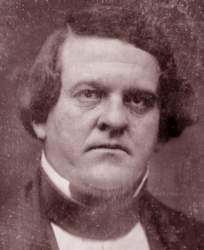Textbook
Not only did Douglas have to content with a formidable foe, but he also carried the weight of a burden not of his own making. The previous year, the nation’s economy experienced a sharp downturn. Prices plummeted, thousands of businesses failed, and unemployment rose. The causes of the panic of 1857 lay in the international economy, but Americans reflexively interpreted the panic in sectional terms. Northern businesses and industries suffered most, and Northerners blamed the southern-dominated Congress, which had just months before reduced tariff duties to their lowest levels in the nineteenth century. Given this invitation, Northerners believed, foreign competition ravaged the northern economy. Southerners, in contrast, had largely escaped hardship because cotton prices remained high. Although Illinois suffered less than the Northeast, Douglas had to go before the voters in 1858 as a member of the freshly accused, southern-dominated Democratic party.
James L. Roark, et al., eds., The American Promise: A History of the United States, 2nd ed., vol. 1 (Boston: Bedford/St. Martin’s, 2002), 477-479.



